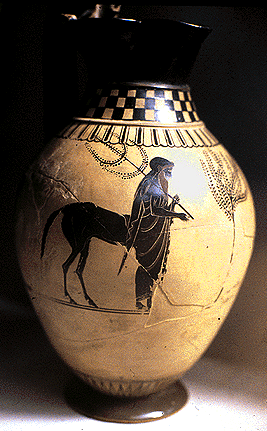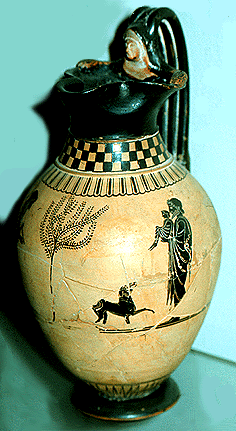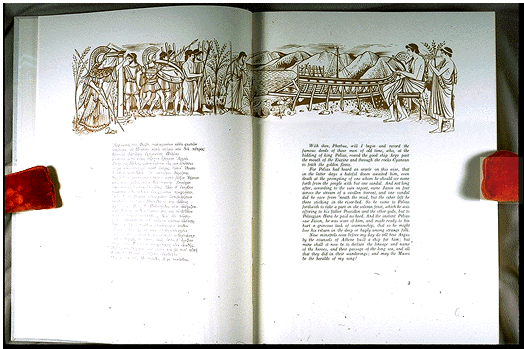Greek Education
During the early years of the fifth century literacy, was widespread, and women were not excluded. Women and girls are frequently depicted in the iconography of Greek vases in the act of reading scrolls. For the Greeks, dancing was an essential element in the cultural complex formed by poetry, music, and dance, and Plato (Laws, 619) censured those who sought to destroy this unity by practicing any of these arts in isolation. A close connection was drawn between dancing and gymnastics, or physical training, mediated by the study of rhythmic movement and musical accompaniment.
In the Republic Plato delinates the proper curriculum for the education of children, both boys, and girls. Of utmost importance was the stress placed on the cultivation of the mind and body in harmony with each other. The practice of music and dance establishes a continuum of oral history and instruction in the myths and legends of Greek culture. Though not as supportive of the education of girls as Plato, Aristotle discusses the education of the young in his work Politics, and in Poetics he establishes a precedent in literary criticism articulating the role of poetry and history in society.
Statue of Homer
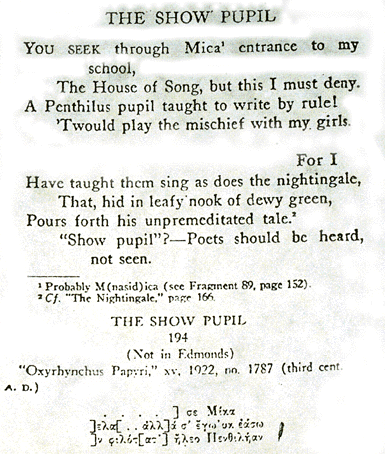
"The Show Pupil"
You seek through Mica entrance to my
school,
The House of Song, but this I must deny.
A Penthilus pupil taught to write by rule!
'Twould play mischief with my girls.
For I...
Have taught them sing as does the nightingale,
That, hid in leafy nook of dewy green,
Pours forth his unpremeditated tale.
"Show pupil"?--Poets should be heard,
not seen.
"Oxyrhynchus Papyri," xv, 1922, no. 1787 (third cent. A.D.)
Figure 1. Sappho. The Songs of Sappho in English translation by many poets. [Mount Vernon, New York, Peter Pauper Press, 1942]. Decorated by Paul McPharlin for the Peter Pauper Press.
Sappho (b. 612 B.C.) Sappho's work illustrates the theme of female education during the Greek period. One of the most famous lyric poets of all time, she was a native of Lesbos for most of her life, excluding a brief period spent in Sicily. She appears to have been married, gave birth to a daughter, and was the leader of a group of young girls who were devotees to music and poetry, perhaps to Aphrodite. Many of Sappho's poems are addressed to these young girls. She seems to have been their dance and music teacher, and they appear to have been her students.
Songs of Sappho
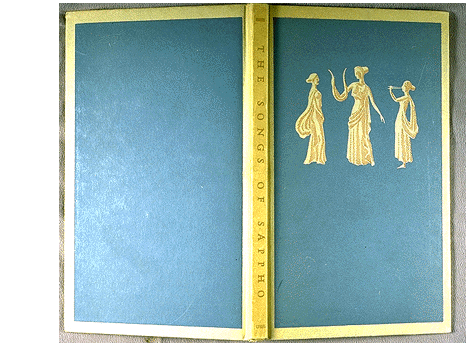
Figure 2. Sappho. The Songs of Sappho in English translation by many poets. [Mount Vernon, New York, Peter Pauper Press, 1942]. Decorated by Paul McPharlin for the Peter Pauper Press.
Sappho (b. 612 B.C.) Sappho's work illustrates the theme of female education during the Greek period. One of the most famous lyric poets of all time, she was a native of Lesbos for most of her life, excluding a brief period spent in Sicily. She appears to have been married, gave birth to a daughter, and was the leader of a group of young girls who were devotees to music and poetry, perhaps to Aphrodite. Many of Sappho's poems are addressed to these young girls. She seems to have been their dance and music teacher, and they appear to have been her students.
"To her Pupils," LXXXVII, Sappho
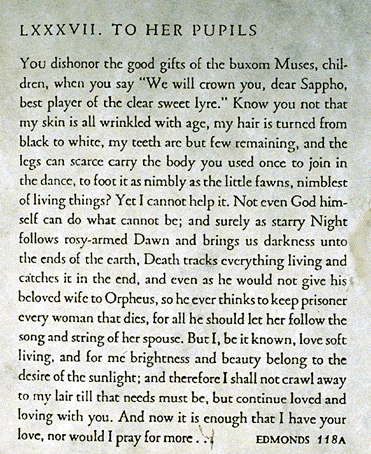
LXXXVII. "To Her Pupils."
You dishonor the good gifts of the buxom
Muses, children,
when you say "We will crown you, dear
Sappho,
best player of the clear sweet lyre." Know
you not that
my skin is all wrinkled with age, my hair is
turned from
black to white, my teeth are but few
remaining, and the
legs can scarce carry the body you used once
to join in
the dance, to foot it as nimbly as the
little fawns, nimblest
of living things? Yet I cannot help it. Not
even God himself
can do what cannot be; and surely as starry
Night
follows rosy-armed Dawn and brings us
darkness unto
the ends of the earth, Death tracks
everything living and
catches it in the end, and even as he would
not give his
beloved wife to Orpheus, so he ever thinks
to keep prisoner
every woman that dies, for all he should let
her follow the
song and string of her spouse. But I, be it
known, love soft
living, and for me brightness and beauty
belong to the
desire of the sunlight; and therefore I
shall not crawl away
to my lair till that needs must be, but
continue loved and
loving with you. And now it is enough that I
have your
love, nor would I pray for more...
trans. Edmonds 118A
Figure 3. Sappho. The Songs of Sappho in English translation by many poets. [Mount Vernon, New York, Peter Pauper Press, 1942]. Decorated by Paul McPharlin for the Peter Pauper Press.
"Hero of Gyara," Sappho
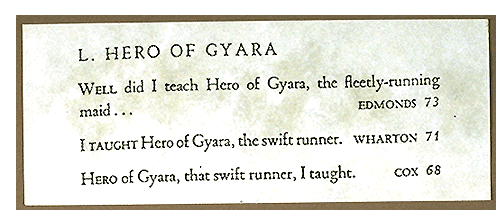
"Hero of Gyara."
Well did I teach Hero of Gyara, the fleetly-running maid... - trans. Edmonds 73
I taught Hero of Gyara, the swift runner. - trans. Wharton 71
Hero Gyara, that swift runner, I taught. - trans. Cox 68
Figure 5. Sappho. The Songs of Sappho in English translation by many poets. [Mount Vernon, New York, Peter Pauper Press, 1942]. Decorated by Paul McPharlin for the Peter Pauper Press.
Three different translations of one poem attributed to Sappho appear below. Each translation indicates the role of Sappho as teacher to a student named Hero of Gyara. Physical training in athletics is strongly indicated as part of the curriculum for girls.
Argonautica
Figure V. Homerus. The Iliad of Homer. [London, Printed by Charles Rivington for T. Osborne, C. Hitch, 1760].
The Shield of Achilles. Some of the finest expressions of the epic view of human life are depicted in the pictures in the shield of Achilles, which is fully described in Book XVIII of the Iliad, and is illustrated in this 18th century edition. On the shield Hephaestus depicted the Homeric cosmology of all creation and daily life.
The Greek Portrait
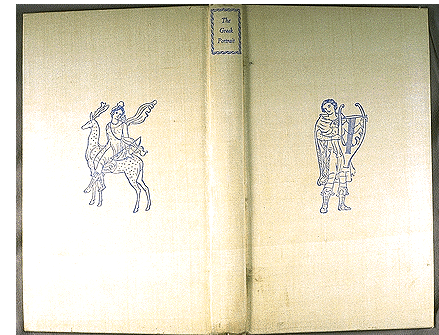
Figure 7. Hamilton, George Rostrevor, ed. The Greek Portrait: An Anthology of English Verse Translations from the Greek Poets (Homer to Meleager) with the Corresponding Greek Text. [London, The Nonesuch Press, 1934].
Pindar (binding)
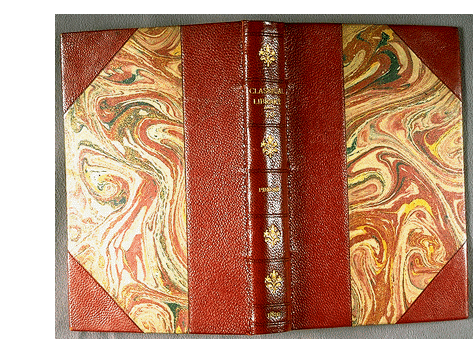
Figure VII. Homerus. A complete leaf of the Editio princeps of Homer, Opera Omnia, Volume II, Odyssea. [Florence, ca. 1488].
One leaf of an incunable printed in Greek, and preserved in a red buckram case, the leaf measures 330 x 238 mm. It is in fine unwashed condition with wide margins and contains some light staining on the outer edge of the document. "Incunabula" are examples of early printed books, usually dated or whose date of origin is known as before 1500.
"The Teacher," Bion.
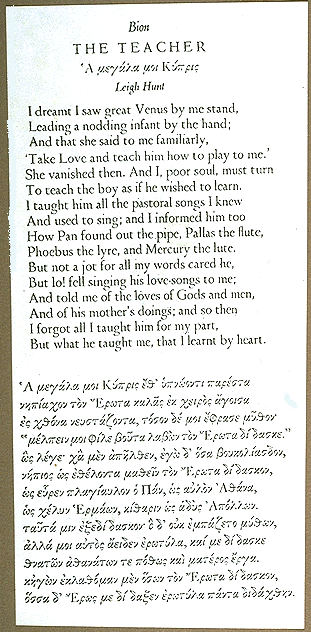
Bion
The Teacher
I dreamt I saw great Venus by
me stand,
Leading a nodding infant by the hand;
And that she said to me familiarly,
'Take Love and teach him how to play to me.'
She vanished then. And I, poor soul, must
turn
To teach the boy as if he wished to learn.
I taught him all the pastoral songs I knew
And used to sing; and I informed him too
How Pan found out the pipe, Pallas the
flute,
Phoebus the lyre, and Mercury the lute.
But not a jot for all my words cared he,
But lo! fell singing his love-songs to me;
And told me of the loves of Gods and men,
And of his mother's doings; and so then
I forgot all I taught him for my part,
But what he taught me, that I learnt by
heart.
trans. Leigh Hunt
Figure 7b. Hamilton, George Rostrevor, ed. The Greek Portrait: An Anthology of English Verse Translations from the Greek Poets (Homer to Meleager) with the Corresponding Greek Text. [London, The Nonesuch Press, 1934].
This book is from the Typography Collection of Special Collections and Rare Books. The excerpted poem entitled "The Teacher" is by Bion (2nd century A.D.) who was a Greek pastoral poet born at Phlossa near Smyrna. Seventeen extracts from his Bucolica have been preserved. These vary in length from a single line to sixteen lines; some seem complete, but some may come from longer poems.
Chiron
